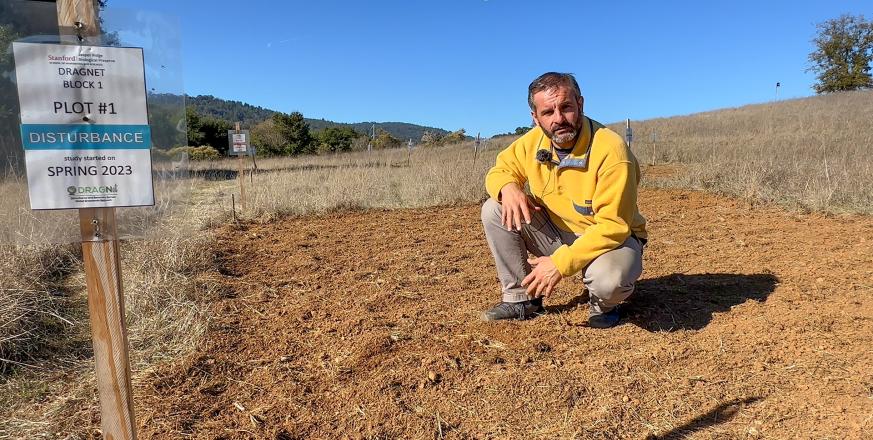Disturbance and Resources Across Global Grasslands (DRAGNet) at Jasper Ridge

Summary
In 2023, Jasper Ridge joined a global network of research sites examining grassland responses to disturbance. The Jasper Ridge site is being studied by Laureano Gherardi and Jorge Ramos, who chose a location especially suited to outreach and training—annual grassland near the visitors’ parking area.
The global network—the Disturbance and Resources Across Global Grasslands (DRAGNet)—is designed to identify consistent patterns in the way grasslands respond to particular types of disturbance, as well as responses that are specific to each site. All sites within the network adhere to a defined size, layout, set of disturbance treatments, measurements, timetable, and data-sharing policy. This uniformity provides for rigorous comparison across the network, as demonstrated by a parent global network, NutNet (Nutrient Network), which began more than a decade ago. In fact, DRAGNet will conduct the same response measurements as NutNet, together with some optional additional measurements.
DRAGNet incorporates a no-treatment control plus four treatments: 1. long-term (repeated) nutrient addition; 2. physical disturbance (annual removal of standing vegetation, litter, rhizomes and tilling of the soil); 3. combined nutrient addition and disturbance; 4. short-term nutrient addition. These treatments are superimposed on any natural disturbances that may continue or possibly respond to the treatments, such as gopher disturbance.
Two additional features of DRAGNet foster global participation. One is that after the disturbance treatments are conducted, the cost and time commitment for the study are designed to be modest: 1-3 days for 2-3 people, and under $100 for fertilizers. Another is that the data is shared across sites, which promotes international collaborations and training for students.
▶VIDEO: Lau Gherardi on the goals and treatments of the DRAGNet experiment (3min)
Project Location (Sector 21)
 |  |  |  |  |  |  |  |  |
 |  |  |  |  |  |  |  |  |
 |  |  |  |  |  |  |  |  |
 |  |  |  |  |  |  |  |  |
 |  |  |  |  |  |  |  |  |
 |  |  |  |  |  |  |  |  |



